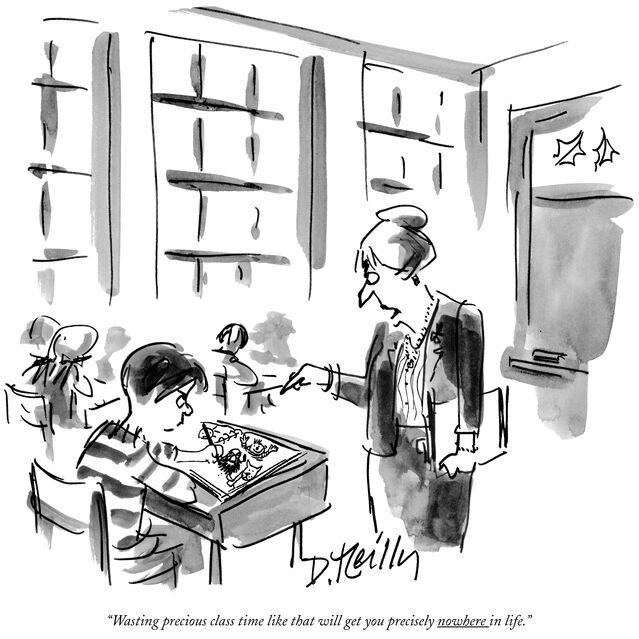Education
Why Draw?
On learning to draw, and drawing to learn.
Posted November 22, 2022 Reviewed by Ekua Hagan
Key points
- Learning to draw is important for all ages in the 21st century, with applications in art and STEM.
- Rather than replacing drawing, the digital revolution has made the power of visual thinking more important than ever.
- Drawing fosters cognition, creativity, communication, and holistic development across the lifespan.
What is it that makes us, as human beings, so special—so unique among all the other living beings we know of? What skills do we need to realize our potential, making life more meaningful and fulfilling? Philosophers and ordinary, everyday people have asked questions like these for ages, and there are plenty of good answers, including our capacities to reason, invent, and share ideas or feelings. But one answer that may not come immediately to mind is a skill that helps make all these other abilities possible: drawing.
The value of learning to draw
In my posts, I make a case for the value of learning to draw for all ages in the 21st century. This is based on drawing’s importance to nearly every facet of human life, including applications across the visual arts, all four STEM disciplines (science, technology, engineering, and mathematics), and more. At the same time, I talk about different ways of teaching drawing, past and present, to foster creative, critical, and reflective thinking applicable to these and many other domains.
If such ideas surprise you, maybe you got this message from a teacher or parent, growing up:

As the caption reads: “Wasting precious class time like that will get you precisely nowhere in life.” One aim of my posts is to show just how wrong that teacher is. Another aim is to counter a more recent challenge: the decline of drawing instruction even in schools of art, architecture, and design, due in part to the digital revolution. Instead, I argue that the power of digital media makes visual thinking that is learned best through drawing a critical ability in almost every walk of life.
Like other kinds of creative thinking, visual thinking in drawing operates in two distinct ways, popularly referred to as “top-down” and “bottom-up.” Top-down, you think about something you want to draw, form an image of it in your mind, then represent that image on paper. Bottom-up, you start by drawing; then ideas emerge from the act of drawing itself. Similarly, in observational drawing, you start drawing what you see, but later find that simply by trying to draw the subject, you come to see things you hadn’t noticed before. In my posts, we will look at multiple ways to draw, how they are applied, as well as how they complement each other.
To illustrate these processes, future posts will cover drawing in map-making and medicine, politics and particle physics, and peace and war. Besides such practical applications, I also look at drawing for holistic development by engaging and integrating intellectual, emotional, sensory-physical, social, and even spiritual attributes. For all these reasons, drawing is presented here as a “gift” of human nature, serving cognition: helping us come to know the world and ourselves; creativity, the ability to find and solve problems; and communication, what Benjamin Franklin called a “universal language,” crossing linguistic and cultural divides.
Evidence for such claims will include recent research on drawing, from fields like developmental and clinical psychology, cognitive science, and neurobiology, with examples ranging from the notebooks of Leonardo da Vinci to contemporary innovations such as drawing in robotics and artificial intelligence. Together, this material is meant to encourage a wider conversation about why drawing and learning to draw are important to life today. Then, to help link theory and practice, each of my posts will conclude with a “Drawing Suggestion,” a mini-lesson for learning how to draw and/or for applying drawing to learning in one domain or another. In fact, our first “Drawing Suggestion” is a “bottom-up” experience in visual thinking, from a book by the same name (small caps in the original).
Drawing Suggestion
Experiences in Visual Thinking (1972), was written not by an artist or art teacher like me, but by an engineer, Robert H. McKim, of Stanford University. McKim begins by quoting an earlier book: Visual Thinking (1969), by Harvard psychologist Rudolf Arnheim. Since then, countless books and articles have come out with similar titles. One of the latest, 50 years after McKim’s, is Visual Thinking: The Hidden Gifts of People Who Think in Pictures, Patterns, and Abstractions (2022), by another non-artist, and a person with autism at that, Temple Grandin, Professor of Animal Science at Colorado State University. All three authors argue that visual thinking is not constrained within the arts, and drawing isn’t either, so they all use examples of drawing to illustrate the process of visual thinking in various fields. For instance, McKim’s book includes a quick sketch of the DNA molecule by Francis Crick, a lightbulb by Thomas Edison, and an automobile part by Henry Ford. The following visual thinking lesson from McKim assumes no prior drawing experience:
This exercise, at the end of Chapter 7, “externalized thinking,” is introduced by a passage on “relaxed eye, free hand":
“Seeing and drawing, like all human skills, are best accomplished in a state of relaxed attention … Seeing by drawing [typically] involves attending [to] two images—the image of the object in view and the image on the page.”
Instead, in this exercise, McKim says to begin simply “by attending [to] only one object, the image that you are drawing.”
Exercise 9.1: “free doodling” reads:
“In a playful and relaxed spirit, draw long, sweeping lines with each of your markers. In rhythm with the natural sweep of your hand and arm, vary drawing pressure from extremely light (just grazing the paper) to very heavy. Fill in areas: dot; texture; pattern. All the while, simply enjoy seeing what you are causing to happen on the paper."
Afterward, McKim encourages a moment of reflection, pointing out that “[t]o make the marker go where you want it to go requires the development of eye-hand coordination.” He then invites readers to “[b]egin to effect this visual motor cooperation by making up doodling games…” leading to Exercise 9-2. We won’t go there yet, but you can try some on your own.
References
Arnheim, R. (1969). Visual Thinking. Berkeley (CA): University of California Press.
Grandin, T. (2022). Visual Thinking: The Hidden Gifts of People Who Think in Pictures, Patterns and Abstractions. London: Rider & Co.
McKim, R.H. (1972). experiences in visual thinking. Belmont (CA): Wadsworth.
About top-down and bottom-up thinking through drawing, see also:
Kantrowitz, A. (2022). Drawing Thought: How Drawing Helps Us Observe, Discover, and Invent. Cambridge (MA): MIT Press
Tversky, B. (2019). Mind in Motion. New York: Basic Books




